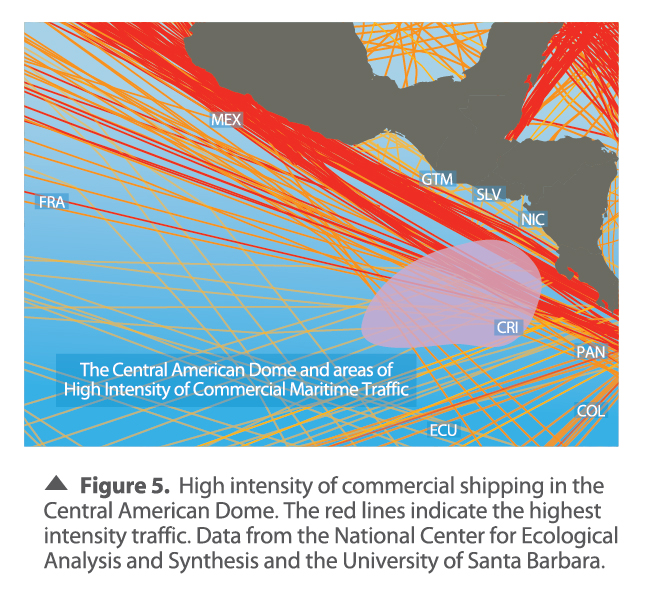Central American Dome – Playa Grande, Costa Rica Expedition
January 9, 2015
In January 2014, MarViva and Mission Blue launched a film expedition with Dr. Sylvia Earle to highlight our Central American Dome Hope Spot. Partners supporting the expedition were LightHawk, The Baum Foundation, Bula Bula and National Geographic. The ecological and commercial value of the Dome’s resources were documented to raise awareness and support for the protection of its species and habitats. The film below, produced by Mission Blue and MarViva, takes viewers on a journey to learn about the Central American Dome (CAD) and why sustainable management of this High Seas Hope Spot is so important for the region:
In 2013, Dr. Sylvia Earle and Mission Blue declared The Central American Dome a “Hope Spot,” designating it as a special area critical to the health of the ocean. Some Hope Spots are protected, while others, such as the Central American Dome, still need to be safeguarded with laws ensuring their sustainable use.
“The term dome refers to an oceanographic feature that results from cold, deep ocean water rising near the surface,” says Lance Morgan of The Marine Conservation Institute.
He continues, “The water itself doesn’t dome, but a cold water band shaped like a dome comes up from the bottom. As this nutrient-rich water enters depths where sunlight can penetrate it unleashes enormous plankton blooms, fueling the entire ecosystem. In turn this supports a food web of krill, pelagic fishes and squids, predatory tunas, seabirds, and marine mammals. This highly productive region of the eastern tropical Pacific is home to abundant marine life, including critically endangered leatherback sea turtles and blue whales.”
This Central American Dome Expedition explored and documented the migration route of the critically endangered leatherback turtle, which leaves the protection of the shore along the Pacific coastline of Central America to feed on the bounty that exists in this high seas Hope Spot.
Mission Blue’s partner, MarViva works tirelessly with governments in the region to educate leaders about the connections between the coastal areas and the open ocean, and to promote sustainable management solutions that are vital for the conservation of leatherbacks and other species. MarViva’s vision is for a “biodiverse and healthy Eastern Tropical Pacific that facilitates the wellbeing of present and future generations.”
The Central American Dome is a site of global importance for one of the most iconic marine creatures, the critically endangered leatherback turtle. The Dome provides an important migration route and foraging area for adult turtles, as well as critical habitat for hatchlings leaving their nesting beaches in Central America. Leatherback populations in the Eastern Pacific were reduced by 90% over the past two decades, mainly due to nest poaching and fisheries bycatch.
During the expedition, we visited The Leatherback Trust’s team at Las Baulas National Park in Guanacaste, Costa Rica to learn about conservation measures being conducted with local authorities. Leatherback Trust researchers and volunteers protect the turtle nests from potential harm on the beach. We were excited to witness a planned excavation, aimed at safeguarding the newborn hatchlings on their way from their nest out to the Central American Dome Hope Spot in the high seas beyond.
The Central American Dome attracts large schools of fish, including tuna, which makes this region a prime target for commercial fishing fleets and smaller recreational sport fishing businesses. A careful balance must be struck between taking advantage of this economic resource and preserving the biodiversity of the hope spot for future generations.
The proximity of the Panama Canal with its heavy vessel traffic calls for a thorough examination of ship routes through the Dome. Just as leatherbacks and blue whales transit this abundant high seas area, so do supertankers and cargo ships. It is critical that measures be taken to avoid hazards such as ship strikes and acoustic disturbances.
Learn more about the expedition through the following links:
National Geographic – Ocean Views: http://voices.nationalgeographic.com/2014/02/12/voyage-to-the-central-american-dome-the-forgotten-sea/
Mission Blue – Jan 28, 2014: /2014/01/aerial-surveys-with-lighthawk-and-leaping-mobulas/
Mission Blue – Jan 27, 2014: /2014/01/finding-the-leatherbacks/
Mission Blue – Jan 24, 2014: /2014/01/expedition-day-two-leatherback-nesting-in-playa-grande/
Mission Blue – Jan 22, 2014: /2014/01/central-american-dome-expedition-team-arrives/
MarViva – Costa Rica Thermic Dome: http://crdome.marviva.net/?lang=en



















